[EXCLUSIVE!] Kam’s Roast Goose: Moving On From Yung Kee to the Michelin Star
December 21, 2015

UPDATE: Kam’s Roast Goose is opening their first overseas outlet in Singapore this October! The new outlet in Pacific Plaza will focus on roast ducks for the time being.
[Hong Kong] It was 4pm on a Saturday when I visited Kam’s Roast Goose (甘牌燒鵝). Even though it had passed lunch time and was too early for dinner, the crowd at this roast goose restaurant in Wan Chai was never-ending. Every table was devouring Kam’s juicy roast goose, happy and well-satiated.
Kam’s Roast Goose, which is about a year old, was started by Mr Hardy Kam, a grandson of the late Mr Kam Shui Fai, who founded the Hong Kong roast goose institution, Yung Kee Restaurant.
We have all read that the iconic Yung Kee is set to close. Yung Kee was founded in 1942 by former street food vendor Kam Shui Fai. Upon their father’s death in 2004, Kinsen and Ronald were granted equal shares to run the restaurant together. But Kinsen soon complained to the court that he was blocked from running the business.
Days before the court ruling, Kinsen died. The late Kinsen’s family, who applied for the court liquidation order, demanded HK$1.3 billion for their stake. But Ronald, who currently runs Yung Kee, was only willing to pay HK$1.1 billion in cash and almost HK$100 million worth of assets. Failing to reach a share buyout deal, the Court of Final Appeal ordered its holding company Yung Kee Holdings Ltd to liquidate. FYI, in 2011, Yung Kee lost the one Michelin star it was granted in 2009.
—————————————————————————————————————————————————————————————-
Now my question is, who is going to continue the Kam’s legacy? Where can we still go for our goose craving in Hong Kong? Mr Hardy Kam, the son of Kinsen Kam, move on from the feud to build his own Kam’s Roast Goose empire. Using the same supplier, recipe and head chef from Yung Kee, it has earned its 1-Michelin Star within a year.
Mr Robert Chua (Thank you Tony Tee & Leanne for the introduction), Singapore-born television producer, has kindly arranged for an exclusive interview with Hardy. I was feeling all excited because I have heard news that Kam’s is coming to Singapore and I wanted to hear it all from the man himself.
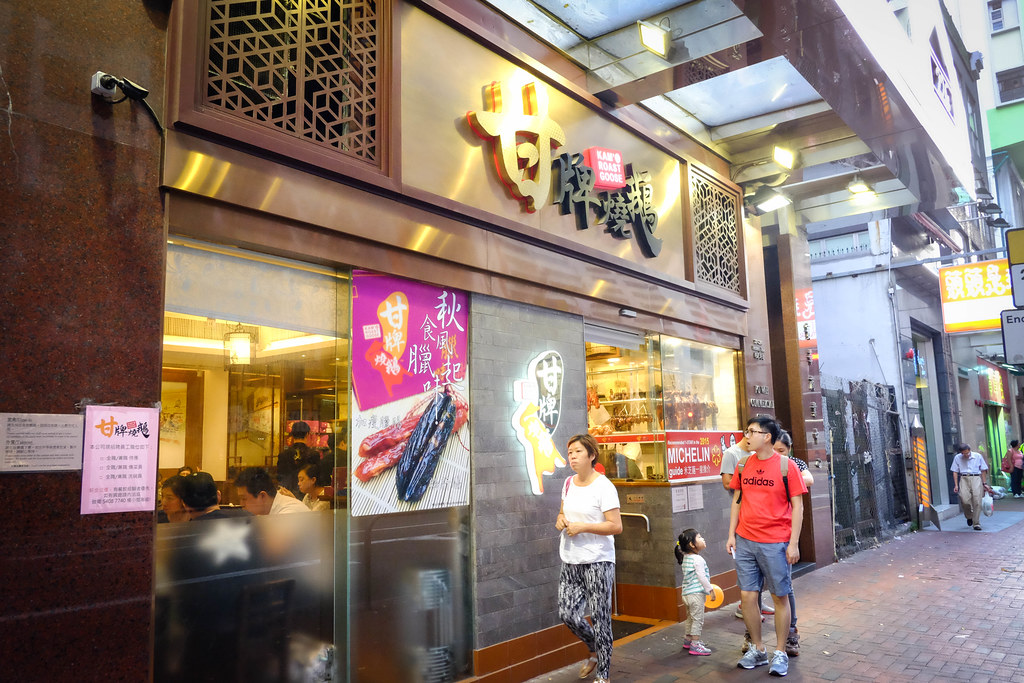
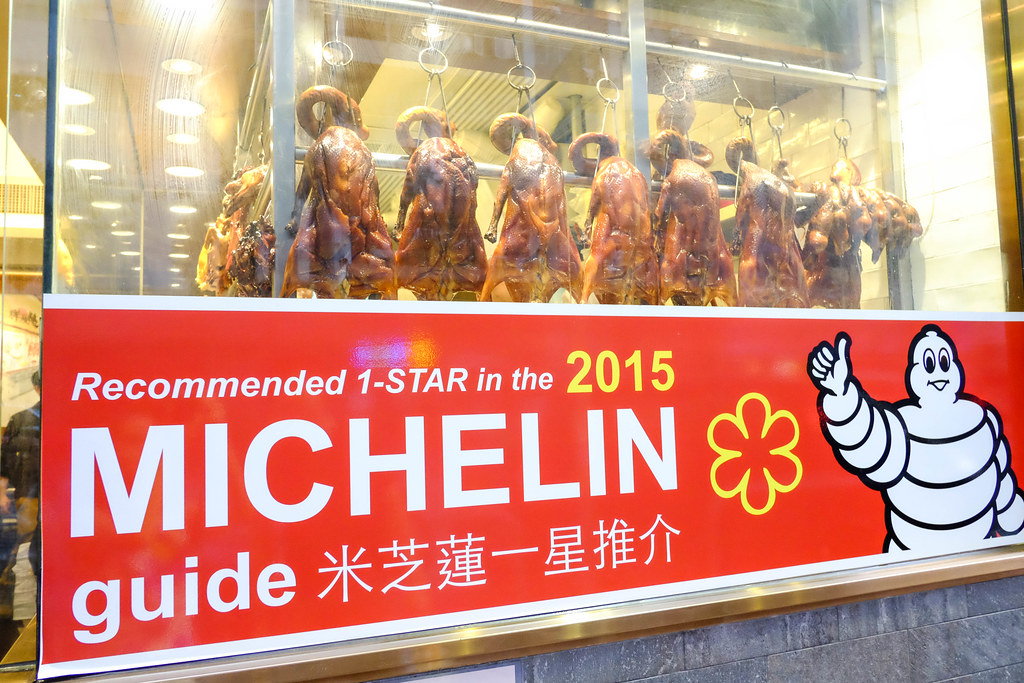
Even though Kam’s Roast Goose has only been in operations for slightly past a year, it has earned its 1-Michelin Star already.
Maureen: I’ve read alot of Yung Kee. But I just wanted to know from you exactly, how did Yung Kee begin?
Kam: Essentially it’s a very long history. It’s a family roast business. My grandfather started out as a helper for many years. Then from some savings, there was a good opportunity and he actually acquired a stall 73 years ago in 1942. He started his own food stall for roasting back right after the war, which was a difficult period to start a business. It was in the central area of Hong Kong near the pier. He started as a very young teenager. Back then, there were not a lot of resources for people.
Maureen: So he learnt roasting from his ex-boss?
Kam: The thing is, back then there wasn’t really any teaching because old teachers didn’t teach. They were very secretive, so he wasn’t really taught. He actually observed because he worked as everything…as a kitchen helper and that kind of stuff. What he did was measure the ingredients every night for the master to roast the goose. Then he would calculate how much of each ingredient the master chef would need. Over time, he would have a good average of what kind of sauces, spice, and all the ingredients. That is a baseline of how he would know of what kind of sauces a chef would use. There is also technique. Basically, he worked really hard from the ground up and at night time — and he started watching how to roast using charcoal. It’s all experience. You have to gain experience. It’s not like you turn on a stove. It’s very different. Over time, he learned the technique of roasting, and this was 72 years ago.
Maureen: Mr Kam started a stall after learning?
Kam: Yes, he started his own business in 1942. Mainly, his targets were near the shipyard. There were still a lot of travellers back then. Many were traveling to Malaysia and Hong Kong. It was near the pier so people would come in and try it and have good word-of-mouth. Back then it was called Yung Kee stall. When the shop grew a little bit bigger, my father joined him in 1962 when he was 16. He started helping out from the ground up. He started in the kitchen, worked on the floor and in basically every single aspect of the business, but he revolutionized the management style. The restaurant started forming because he incorporated the kitchen, the wok and not just the roasting, and it became Yung Kee Restaurant. When my grandfather started it, it was known as Yung Kee, but it was more of a barbeque/roast stall. When my father joined in, everything started to grow and it became more like a restaurant.
Maureen: How did you come into the picture?
Kam: Me? [laughs] In the 1970’s I was just a baby so I didn’t know too much about the business, of course. My father had a very good mindset on the Chinese cuisine culture so he had all these great ideas of cooking and bringing new concepts to the restaurant. Over the years, he talked to us. I have two brothers–one older and one younger. Me and my older brother became more involved into the business. At home, we started talking about how he thought of all these ideas and how he could bring the old traditional dishes into the current situation to make a good mix out of it. When we were young, we would listen. Over the years, it got in our blood.
Maureen: Then you started going in this direction. What were you doing before that?
Kam: I was in the computer business, so it was very different — hospitality and F&B–but it was only from the work part. Again, my father talked about it all the time so it was always kind of in the back of my mind, but I wasn’t in the industry. After I came back from Canada in 2003, I started to work in the kitchen. I was 30 years old then. We had to go into the kitchen, know the purchasing and all the products, know the customers and basically go through the same process that he did when he got into the business. It’s been 12 years, so I definitely have business experience now.
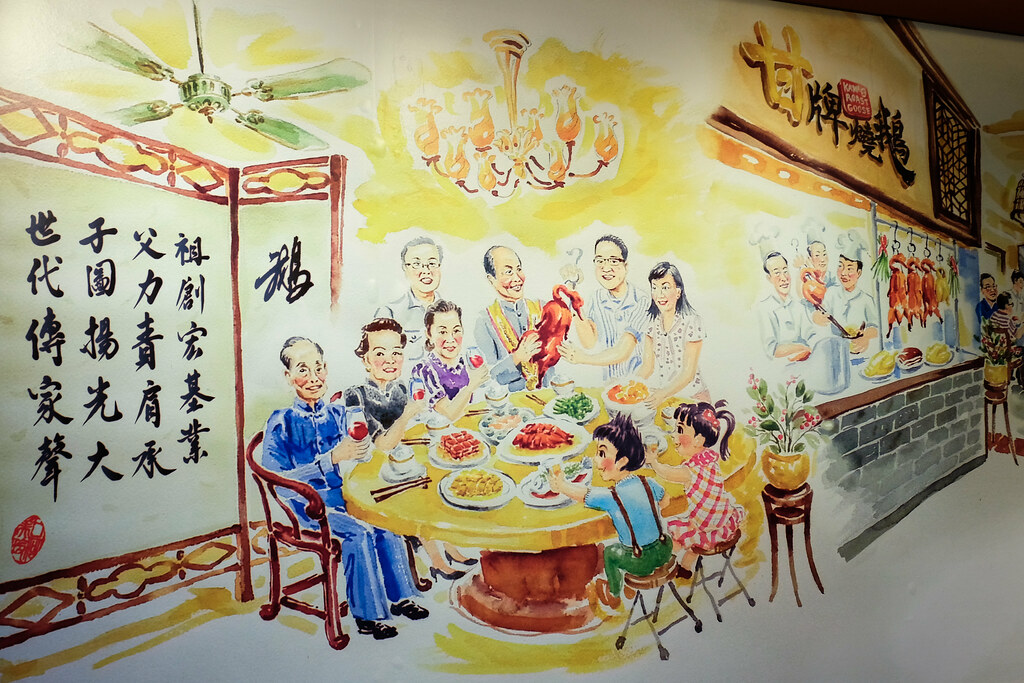
Artist’s impression of Kam’s family seen in Kam’s Roast Goose restaurant.
Maureen: How did Kam’s Goose come about?
Kam: When my father passed away in 2012 and I took some time off and thought about my own career path. At that time, I thought about how my grandfather started Yung Kee and how my father developed it into a restaurant over the years, and I wanted to follow the same path with passion and to bring good quality to people. I had seen my father as a very happy, personable and generous person and he translated that to food. You bring that all together and you see all the joy and happiness and see friends and meet new people constantly. Food is a common ingredient. You sit down at a round table and start talking–mostly about food–and people are happy. In the summer of 2014 we had the grand opening of Kam’s Roast Goose. I want to bring that same environment and atmosphere to Kam’s Roast Goose.
Maureen: Your brother also opened a roast goose restaurant?
Kam: My older brother, Kevin, also has his own business. We opened the same day. It’s called Kam’s Kitchen. Basically, he had the same idea as me, as my grandfather started small, but his approach started from where my father’s started so the legacy continues from what my father left: restaurant style. I started as a roast specialist so there’s some contrast. The starting point is a little bit different but the ideas was the same — something small and bringing back some of the old customers. We wanted to let them know that we would bring in good quality food. The world changes quite quickly and food changes with it, but sometimes, the old is always the best because it’ll withstand time. Time itself is a test. Sometimes it works and it will withstand the test of time.

Head Chef Wong Kwan-sang & Owner Hardy Kam at Kam’s Roast Goose
Maureen: Now, with you being a roast specialist from the way your father taught you. How is the goose different?
Kam: Actually, we use the same approach and recipe. We use the same Chinese supplier of goose as Yung Kee, and our head chef Wong Kwan-sang was also from the restaurant. It’s a family recipe and the same sauce and marinade techniques used back in my grandfather’s day. That is to say, using a certain type of goose and the traditional way of preparing it–the airing and drying. Marinating is a style we use–a camp style–that is more moist to keep the moisture in the meat yet maintain the goose flavour. Also, we do the sauces the way that my grandfather prepared it for many, many years.
We’ve been doing this for many years so it’s the same for us. I tell everyone there’s no difference because we are Kam. I want to carry on and continue this family legacy. That is what I want to…not just the roast goose, but everything including the roast char siew, the roast pork, the roast barbecue pork, the suckling pig and all the other roast products as one Cantonese roast food. That is something that I want to achieve.
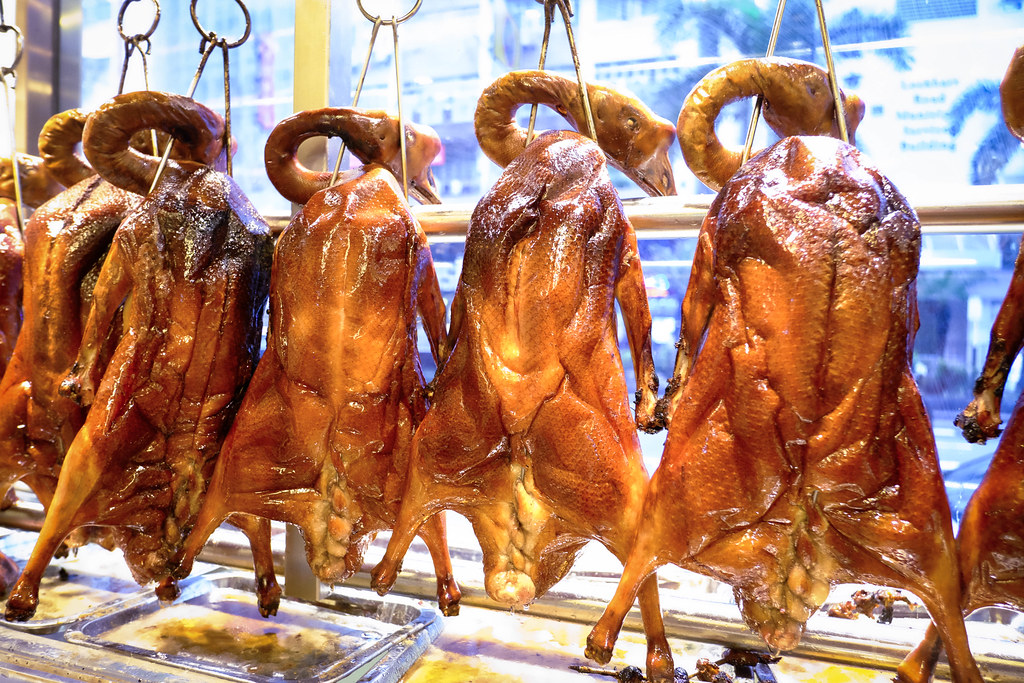
Kam’s Roast Goose marinade and roast their goose fresh daily.
Maureen: In your perception, what is a good plate of goose?
Kam: In Chinese, it’s called 色香味. If you look at the color, the presentation and how it’s displayed, does it look appealing? Next is the smell and fragrance. Can you smell the freshness of it? Last is the taste–when you put it in your mouth, how does it taste? All three however, are quite personal and subjective.
Some people like crispy, some people don’t. Some people like fat, some people don’t. Some people like salty, some people don’t. You can’t really say what is right or not, but what we want to do is maintain Kam’s tradition. The way that we prepare it, there’s more juiciness and natural flavor of the goose and less crispiness.
There are also different methods to roasting. Some may use less marinating and less sauce but with more crispiness and therefore, a little drier. For us, it’s the other way around. The meat is juicy, yet the skin won’t be as crispy as some other styles because we thought keeping the moisture of the meat was more important than crispiness. Once you lose the moisture, it’s going to be tough and dry.
Maureen: We are excited that Kam’s is coming to Singapore! But why Singapore?
Kam: First of all, there are a lot of people who come to Hong Kong to try different food. A lot of customers do come from everywhere basically. In terms of, ‘Why Singapore first?’ It’s because I feel confident that it will work. We feel that it’s a good market to get into, and also, for Singaporeans, I think they’ll appreciate us bringing our tradition to Singapore because a lot of people come to our shop and appreciate our food. Singaporeans, I feel, really appreciate the food and the passion about the food. Like I said, I want to bring happiness and joy and the fun in this. This is one thing that I learned from my father.
Maureen: Any challenges?
Kam: We’re still in the testing stage. Mainly it’s the goose and other roast products–what’s available as a source in Singapore. It’s quite important because when we start our restaurant in Singapore, we would like to try to find the best available ingredient for all our products. One big obstacle is the goose, because goose is quite unique in the Hong Kong market. The question is whether goose is available in Singapore. If it is, what type? Of course if there is none, we have to look elsewhere or we have to think of other ideas to try to import it in. If we still can’t, we have to look for what’s available in Singapore. We won’t force the issue if we cannot find what’s right for the brand and what’s right for the food. We’re still going to try to continue and try to import, but if we can’t, we won’t force the issue. We’ll just try to find a different type of goose for example. We’re going to do a lot of taste testings at first to make sure the goose is right and whether the size is right for roasting. It’s a very long process.
Maureen: So this first restaurant is going to have your stamp–the same concept, the same recipes. Are there going to be any special dishes specifically for the Singapore market?
Kam: Of course, we’re still at the beginning stage right now and we’ll look into the menus later on. We’ll be looking into what other local ingredients or local foods people would enjoy. It’s quite open right now. It’s quite subjective–what people like to eat–but again,our concept is still to maintain the traditional Cantonese cuisine to Singapore. We want to keep that first. We’re not going to change. We might think of some new products or use different types of products to make the same dish….a specialised dish for that region. Overall, it will be similar.
Even from talking to Singaporeans back in Hong Kong, they appreciate not just the goose, but all the other products as well–roast pork, roast barbecue pork. They like it because of how we prepare it and how we bring it to them. I feel confident that if we do the same thing in Singapore…
—————————————————————————————————————————————————————————————-
I thought about how my grandfather started Yung Kee and how my father developed it into a restaurant over the years, and I wanted to follow the same path with passion and to bring good quality to people.
– Hardy Kam
—————————————————————————————————————————————————————————————-
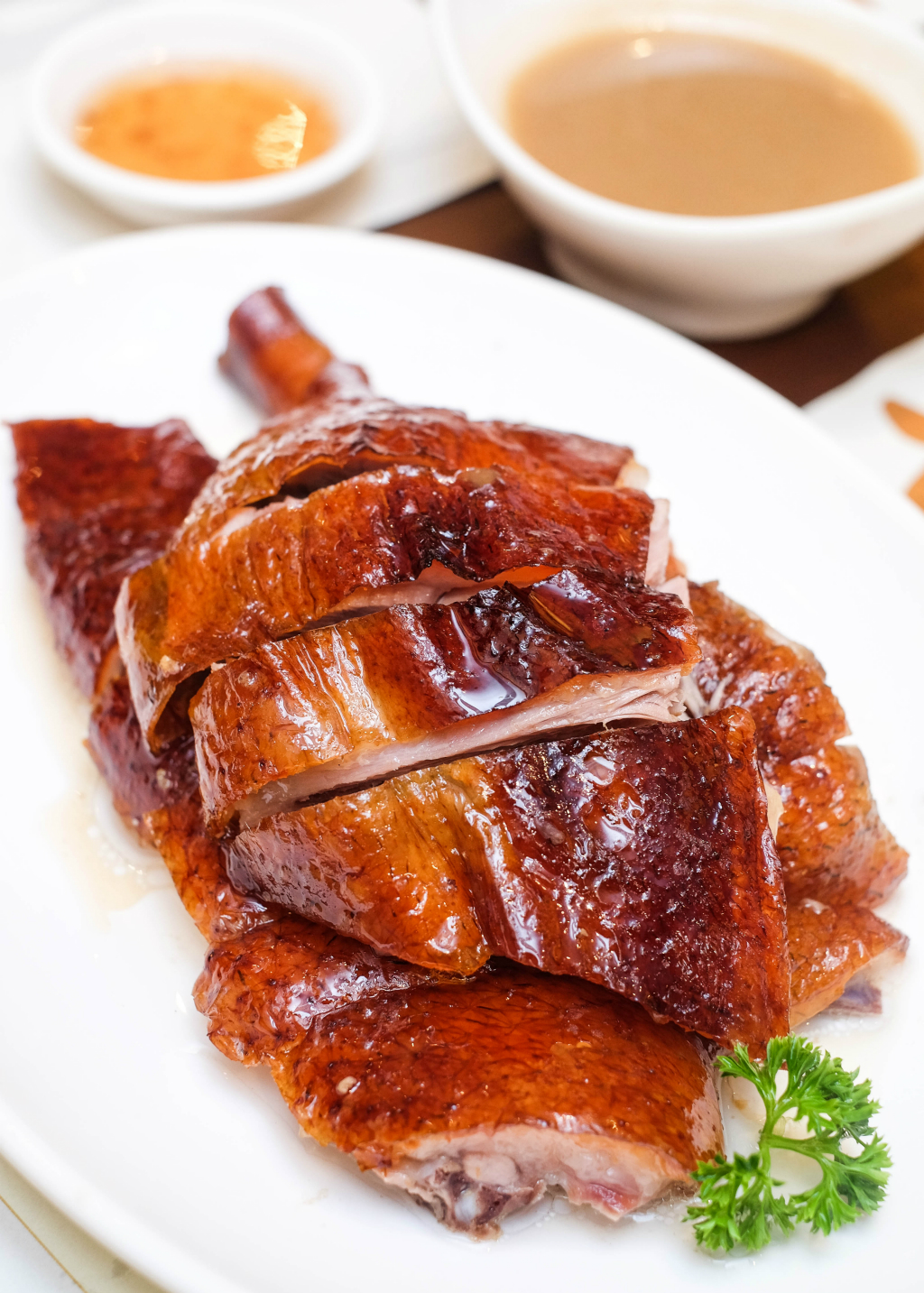
We visited Kam’s Roast Goose for dinner after the interview. This simple and unpretentious restaurant sits not more than fifty, and has a concise menu that focuses on its roasts. Four months after its opening in July 2014, this new restaurant has already nabbed a Michelin-star. That’s a feat that Yung Kee has never achieved and it speaks about the quality of roast meats that Kam’s serves.
Naturally, we plump straight for the roast goose. Using a black feather goose that weight about 2.8 to 3kg, Hardy said it’s perfect for roasting. “The fat content is not too much, the size is moderate but the goose flavour is very strong.” Hardy explains, “If you find meat that’s not tender enough or the fat content is too high, when you roast it, it won’t turn well. We chose 3 kilos because this is the growing stage of the goose. If it’s too young, it may be tender, but the flavor is not there. If it’s too old, it’s very tough. That’s why we try to pick somewhere in the middle–the mature stage of the goose. Again, this is all from experience from all of these years.”
Similar to Yung Kee, Kam’s Roast Goose sells 100 birds a day. With everything done fresh daily, the whole process takes three to four hours–cleaning, marinating, air-drying and then roasting. The chef comes in early in the morning and the goose goes in the oven around 9am. The first batch of goose doesn’t come out until about 10.30am. Result? The bird at Kam’s has a wonderful aroma that comes from the fatty, roasted skin. The meat was juicy and tender, even better with the subtly sweet plum sauce! A whole leg costs HK$135, and needless to say, we finished the portion in the blink of an eye. I have tried many other roast goose eateries in Hong Kong and Kam’s version is truly very impressive.
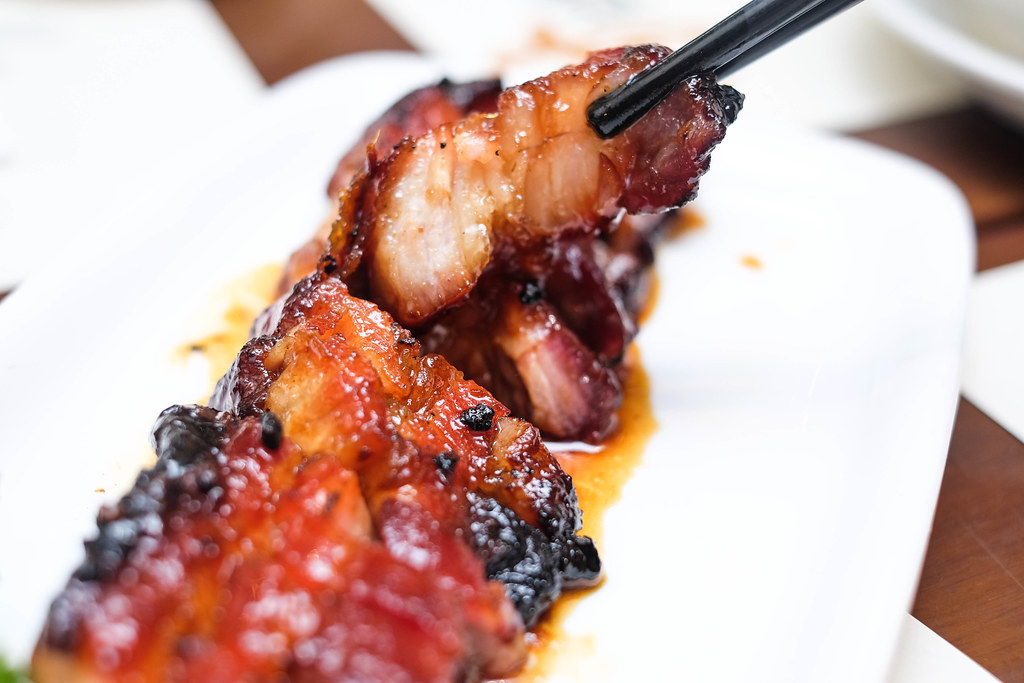
Kam’s version of BBQ pork belly (char siew, HK$140) is a fatty, flavorful knockout. It appeared on our table as a glistening mound of thick, meaty chunks slathered in a gooey dark red sauce. The first bite hushed us — the meat was so soft and packed with flavor I could almost feel it melting on my tongue.
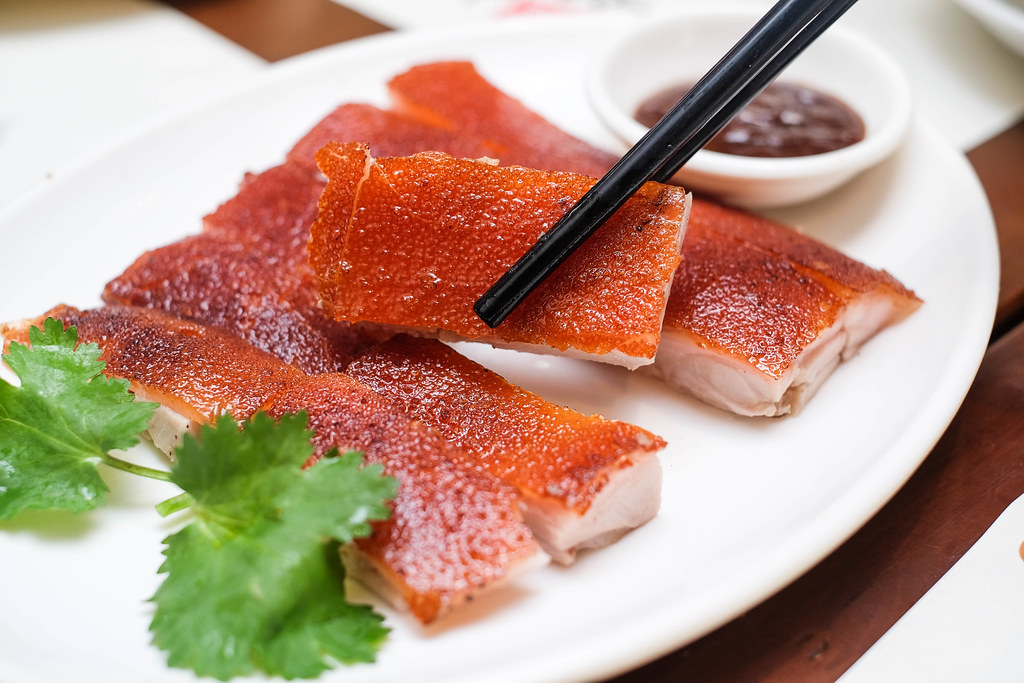
The crispy roast pork (HK$75) has a crackling crispy skin and a lovely tenderness too.

They also serve roast duck which is above average.
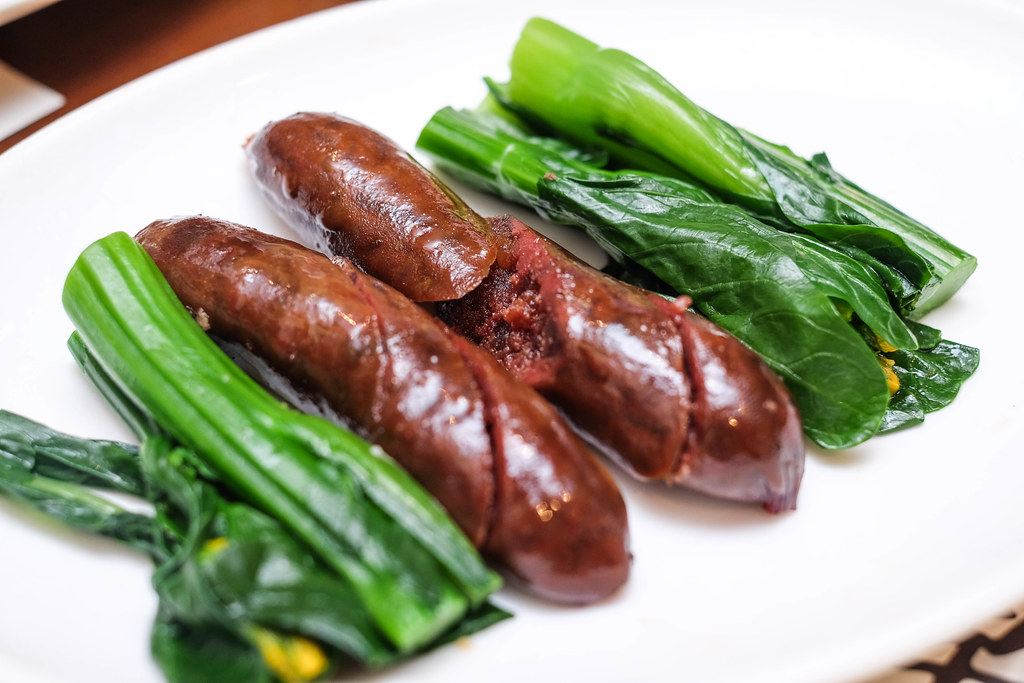
Forget about foie gras, try Kam’s cured goose liver sausage! This one is power packed with umami flavour. If I am going back again, I would definitely buy some home!
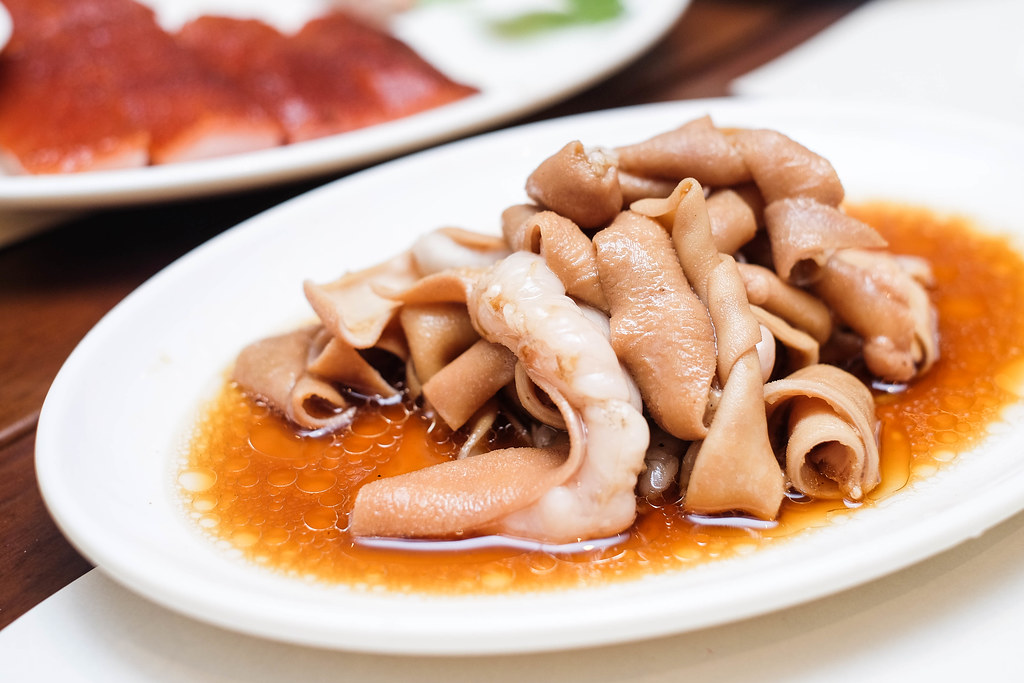
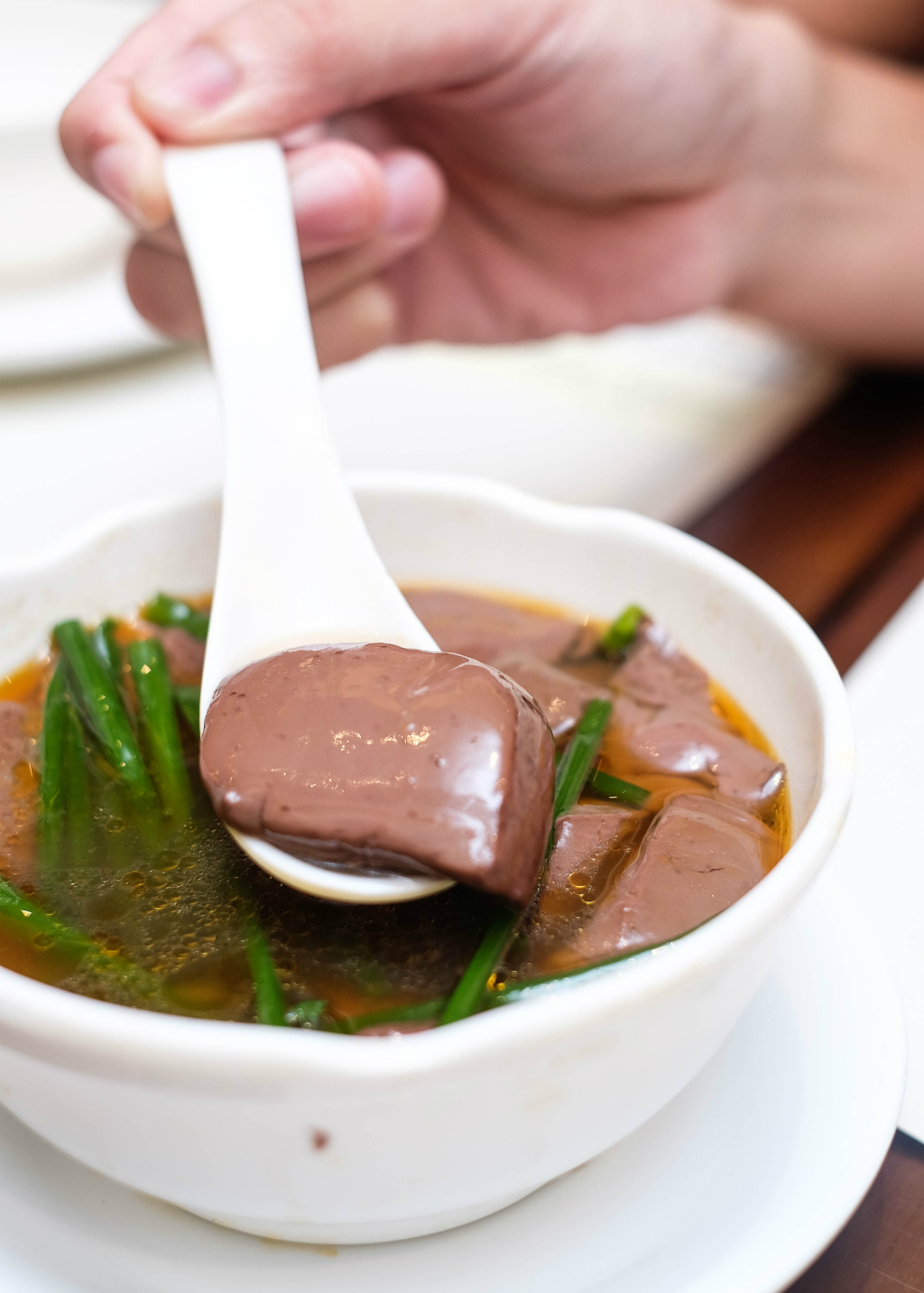
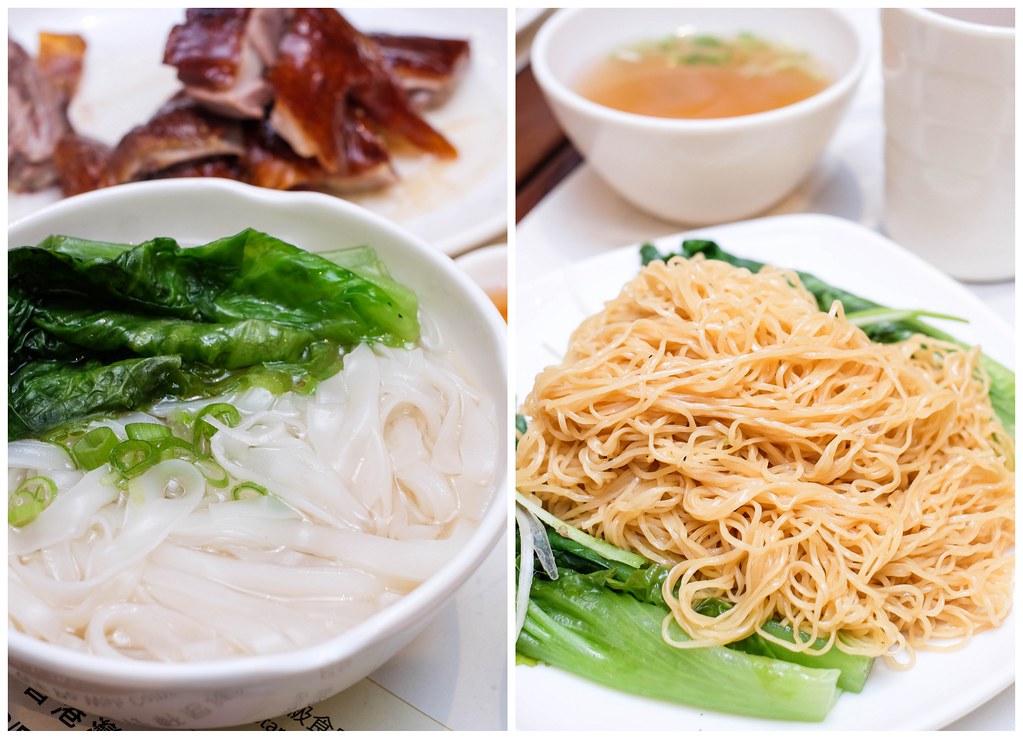
Because we can’t eat blood in Singapore, I took the chance to have it in Hong Kong. That’s a bowl of light flavourful broth with geese blood pudding (HK$50) and fresh garlic chives. We also try the Prince Kinsen Noodle (HK$36), one of Yung Kee’s signatures invented by Kinsen. Doused with roast goose drippings and then drenched in a clear consommé, the noodles offers al dente texture with good.
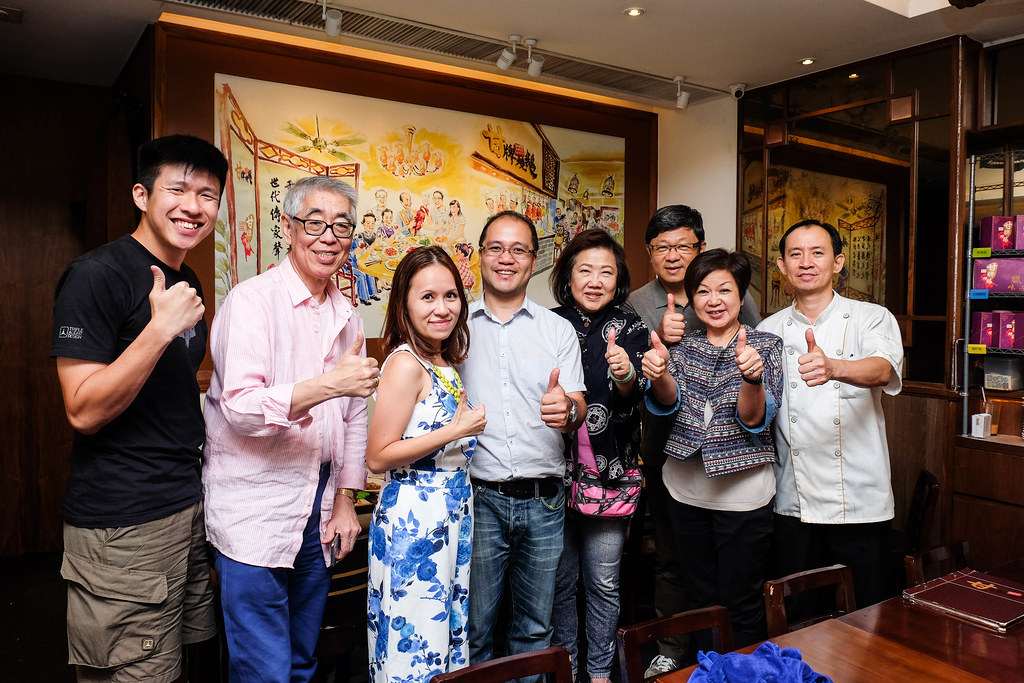
Every foodie who visits Hong Kong would inevitably include Yung Kee on their checklist. It started off as a road-side stall in the 1942 selling roast meats. It is now one of the most famous restaurant serving roast goose and a range of Cantonese dishes. I have tried it during my last trip to Hong Kong. Honestly, I was rather disappointed. So now the question is – does Kam’s Roast Goose really roast better geese than Yung Kee?
My answer: Yes, definitely. It’s thrillingly unbound, never letting precedent get in the way of deliciousness. Almost everything I had at Kam’s Roast Goose wowed me. As the saying goes “麻雀虽小,五脏俱全”. Kam’s Roast Goose may be small, but it blew our mind. Now, I am really looking forward to their first shop in Singapore, which is slated to open first half of 2016.
Kam’s Roast Goose
Address: 226 Hennessy Road, Wan Chai, Hong Kong
Tel: +852 2520 1110
Website: http://www.krg.com.hk/



